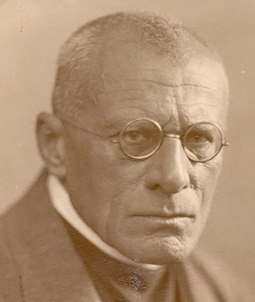Artur Nikodem (1870-1940) was born in Trent, Austria. As a young man, Nikodem studied at the Academy of Fine Arts in Munich, Milan and Florence. He then served in the Austrian Navy before settling briefly in Paris, where he was strongly influenced by the works of Monet and Cezanne. Awestruck by the ability of pigment to rearrange and restructure life on canvas, Nikodem began his endeavors as a painter. His burgeoning artistic career was delayed by military service during World War I. After the war, Nikodem returned to his home in Innsbruck where he began work as a freelance artist. He agreed to test cameras and film for a friend who sold photographic supplies, privately pursuing this means of artistic expression. The modest size and intimate subject matter of these photographs provides a window into the artist's life and mind.
After a series of successful international exhibitions, Nikodem emerged as a spokesman for Tyrolean artists. As Nikodem grew older, the changing political climate resulted in his paintings being outlawed in Germany and part of the collection in Nuremberg was destroyed. Unable to secure a teaching position at the Viennese Academy, Nikodem withdrew from public life and lived in seclusion with his wife, Barbara Hoyer, until his death in 1940.
Nikodem's photographs were not exhibited or discussed outside of the studio until after his death. Although he worked as a painter for the bulk of his artistic career, he was also a prolific photographer, documenting the small towns and pastoral beauty of the Austrian countryside as well as the women in his life. Nikodem captures these women, his models and lovers, including Gunda Wiese - who died of tuberculosis - and his wife Barbara Hoyer. These sensual portraits portray the erotic tension between the older artist and his much younger subjects. Artur Nikodem's portraits have invited comparison to the paintings of Egon Schiele and the series of photographs by Alfred Stieglitz of Georgia O'Keefe, similarly characterized by both playful experimentation and somber meditation.
Source: Robert Mann Gallery
